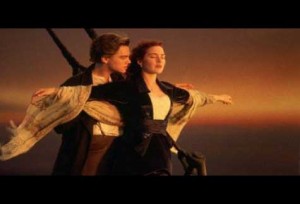 Director James Cameron and his team from Lightstorm Entertainment relied on digital mastering and stereoscopic technology from DVS for review and approval of scenes from the recently released stereoscopic version of Titanic. DVS’s CLIPSTER and FUZE systems were used extensively to review scenes from the movie in stereo as it was undergoing the 3D conversion process, playing back uncompressed 2K media in stereo, which allowed Cameron to view the film on a big screen as audiences will see it in cinemas.
Director James Cameron and his team from Lightstorm Entertainment relied on digital mastering and stereoscopic technology from DVS for review and approval of scenes from the recently released stereoscopic version of Titanic. DVS’s CLIPSTER and FUZE systems were used extensively to review scenes from the movie in stereo as it was undergoing the 3D conversion process, playing back uncompressed 2K media in stereo, which allowed Cameron to view the film on a big screen as audiences will see it in cinemas.
CLIPSTER is a digital intermediate workstation, combining editorial, color correction, restoration and stereoscopy tools. FUZE is a companion technology used in digital cinema mastering, accommodating material up to 2K, including 3D.
As Titanic was undergoing conversion to 3D, Cameron, Titanic producer Jon Landau and stereo supervisor Geoff Burdick used CLIPSTER and FUZE systems at Fox Studios in Los Angeles, at a Lightstorm Entertainment facility in Malibu and at a Fox facility in Australia, to review the conversion work being performed by a variety of third-party facilities. In each instance, CLIPSTER and FUZE were set up in theater-style environments where stereo media could be viewed either on a projection screen or 3D monitor.
The CLIPSTER FUZE combination made it possible to review uncompressed stereo media in a color-calibrated environment while performing a variety of editorial and grading functions. “It allowed them to create and edit DCPs on the fly with no rendering or pre-rendering,” explained Dan Germain, who heads market development for DVS in the Americas. “They could also connect to any display or work in any raster instantly.”
“Jim, Jon and Geoff were able to review the project in exactly the same format as cinema-goers will see it on the big screen, and in the Blu-ray format that consumers will see at home. They could switch between those modes instantly or look at them side by side,” he added.
“Due to the stereo conversion, every shot in Titanic became an effects shot,” noted Burdick. “We needed a system that was seamless, reliable and allowed us to do everything we needed to do. We used the system for all of our reviews. It looked beautiful, it handled material from all of our vendors and it performed flawlessly.”
Germain added that tests conducted with Lightstorm showed that the systems support stereoscopic 5K workflows and frames rates of 48p and 60p or 96Hz and 120 Hz in 3D.





